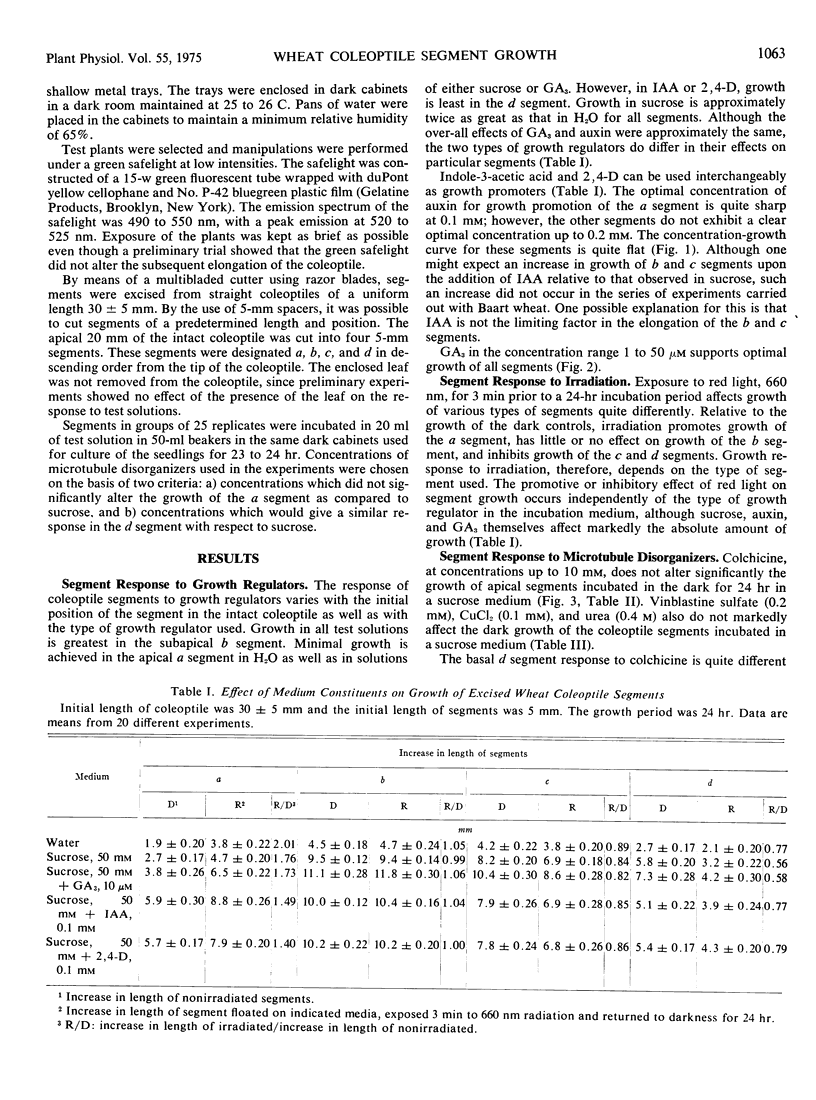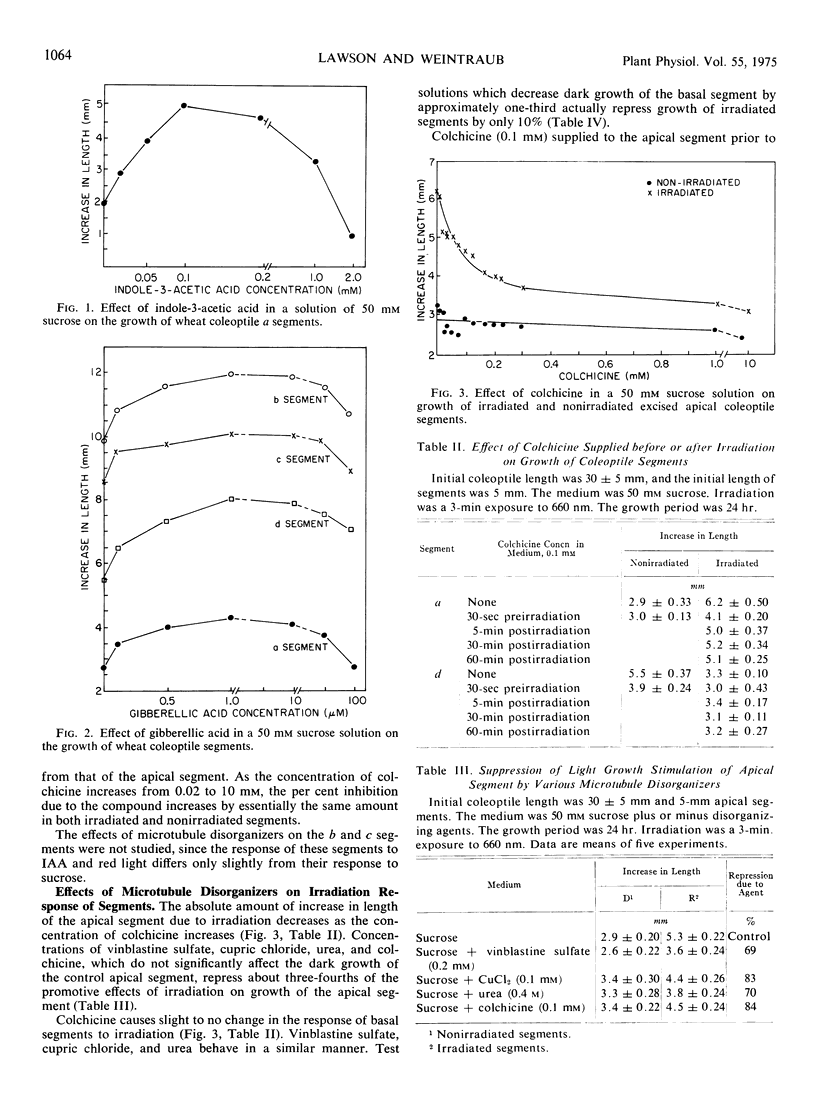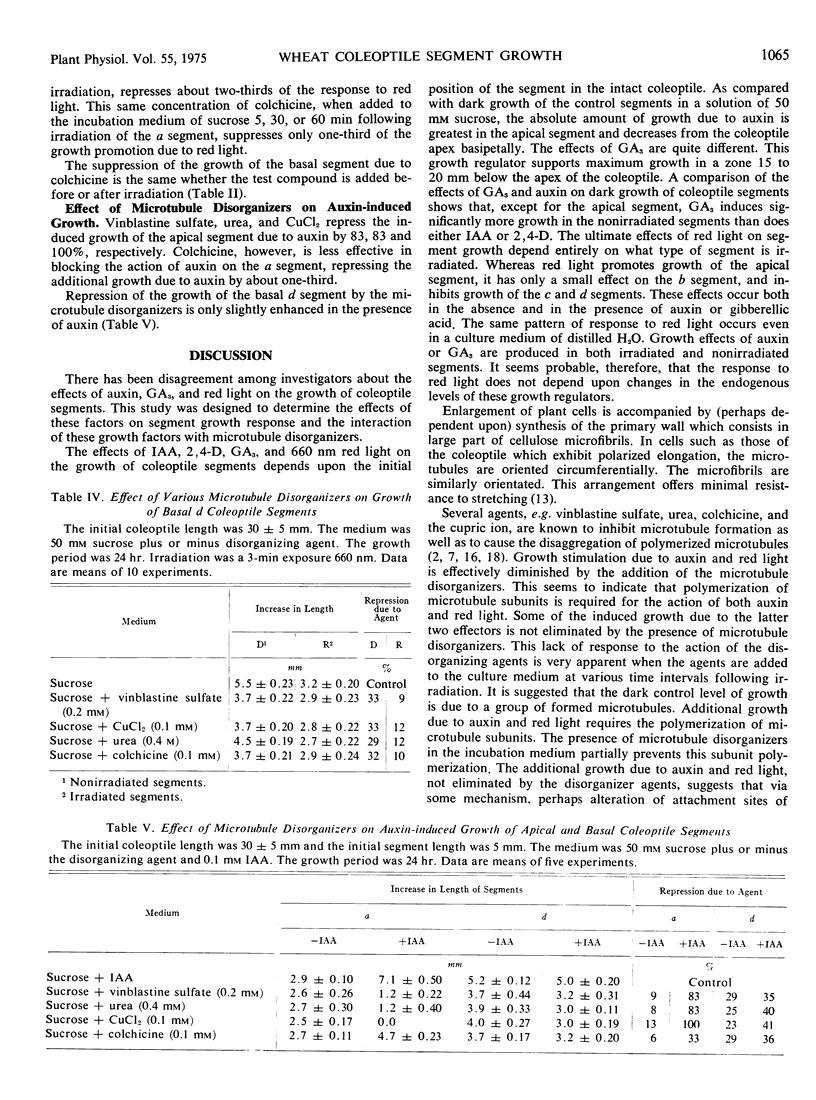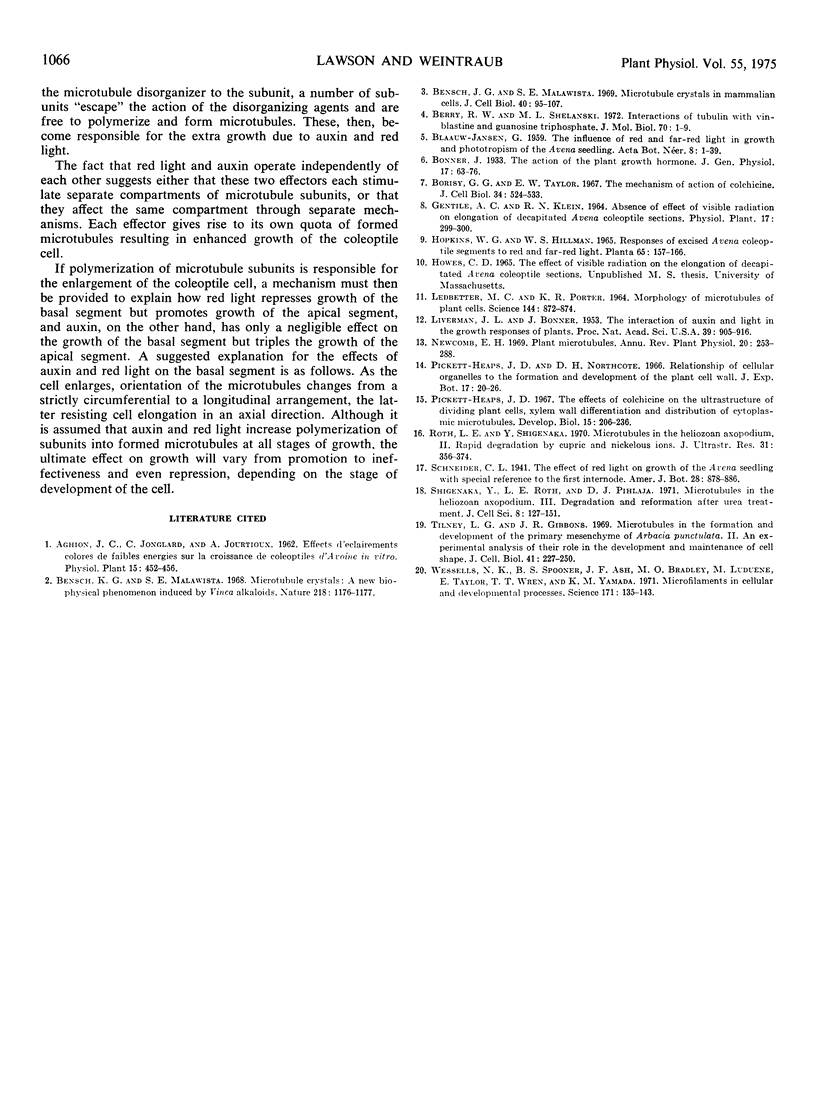Abstract
Growth response of coleoptile segments excised from 3-day-old seedlings of wheat (Triticum vulgare cv. Baart) to gibberellic acid, indoleacetic acid, and 2,4-dichlorophenoxyacetic acid, to red light, and to several microtubule disorganizers depends on the initial position of the excised segment in the intact coleoptile. Red light, 660 nm, stimulates the growth of the apical cells, but inhibits markedly the growth of the cells in the basal region of the coleoptile. The effects of red light are independent of sucrose, gibberellic acid, indoleacetic acid, and 2,4-dichlorophenoxyacetic acid, even though these substances themselves markedly affect the growth of the coleoptile segments. Concentractions of the microtubule disorganizers, vinblastine sulfate, cupric chloride, urea, and colchicine, which do not alter significantly the growth of the dark control apical segments, substantially repress the promotive effects of red light or auxin on the increase in length of the apical cells of the coleoptile. This suggests that stimulation by red light and by auxin involves microtubule production. Microtubule disorganizers repress the growth of elongating cells of the coleoptile, yet on the other hand, auxin and irradiation do not alter significantly the response of basal cells to the microtubule disorganizing agents. We hypothesized that light and growth regulators induce polymerization of nonaggregated microtubule subunits, resulting in faster growth.
Full text
PDF




Selected References
These references are in PubMed. This may not be the complete list of references from this article.
- Bensch K. G., Malawista S. E. Microtubular crystals in mammalian cells. J Cell Biol. 1969 Jan;40(1):95–107. doi: 10.1083/jcb.40.1.95. [DOI] [PMC free article] [PubMed] [Google Scholar]
- Bensch K. G., Malawista S. E. Microtubule crystals: a new biophysical phenomenon induced by Vinca alkaloids. Nature. 1968 Jun 22;218(5147):1176–1177. doi: 10.1038/2181176a0. [DOI] [PubMed] [Google Scholar]
- Borisy G. G., Taylor E. W. The mechanism of action of colchicine. Binding of colchincine-3H to cellular protein. J Cell Biol. 1967 Aug;34(2):525–533. doi: 10.1083/jcb.34.2.525. [DOI] [PMC free article] [PubMed] [Google Scholar]
- Ledbetter M. C., Porter K. R. Morphology of Microtubules of Plant Cell. Science. 1964 May 15;144(3620):872–874. doi: 10.1126/science.144.3620.872. [DOI] [PubMed] [Google Scholar]
- Liverman J. L., Bonner J. The Interaction of Auxin and Light in the Growth Responses of Plants. Proc Natl Acad Sci U S A. 1953 Sep;39(9):905–916. doi: 10.1073/pnas.39.9.905. [DOI] [PMC free article] [PubMed] [Google Scholar]
- Roth L. E., Shigenaka Y. Microtubules in the heliozoan axopodium. II. Rapid degradation by cupric and nickelous ions. J Ultrastruct Res. 1970 May;31(3):356–374. doi: 10.1016/s0022-5320(70)90138-3. [DOI] [PubMed] [Google Scholar]
- Shigenaka Y., Roth L. E., Pihlaja D. J. Microtubules in the heliozoan axopodium. 3. Degradation and reformation after dilute urea treatment. J Cell Sci. 1971 Jan;8(1):127–151. doi: 10.1242/jcs.8.1.127. [DOI] [PubMed] [Google Scholar]
- Tilney L. G., Gibbins J. R. Microtubules in the formation and development of the primary mesenchyme in Arbacia punctulata. II. An experimental analysis of their role in development and maintenance of cell shape. J Cell Biol. 1969 Apr;41(1):227–250. doi: 10.1083/jcb.41.1.227. [DOI] [PMC free article] [PubMed] [Google Scholar]
- Wessells N. K., Spooner B. S., Ash J. F., Bradley M. O., Luduena M. A., Taylor E. L., Wrenn J. T., Yamada K. Microfilaments in cellular and developmental processes. Science. 1971 Jan 15;171(3967):135–143. doi: 10.1126/science.171.3967.135. [DOI] [PubMed] [Google Scholar]


